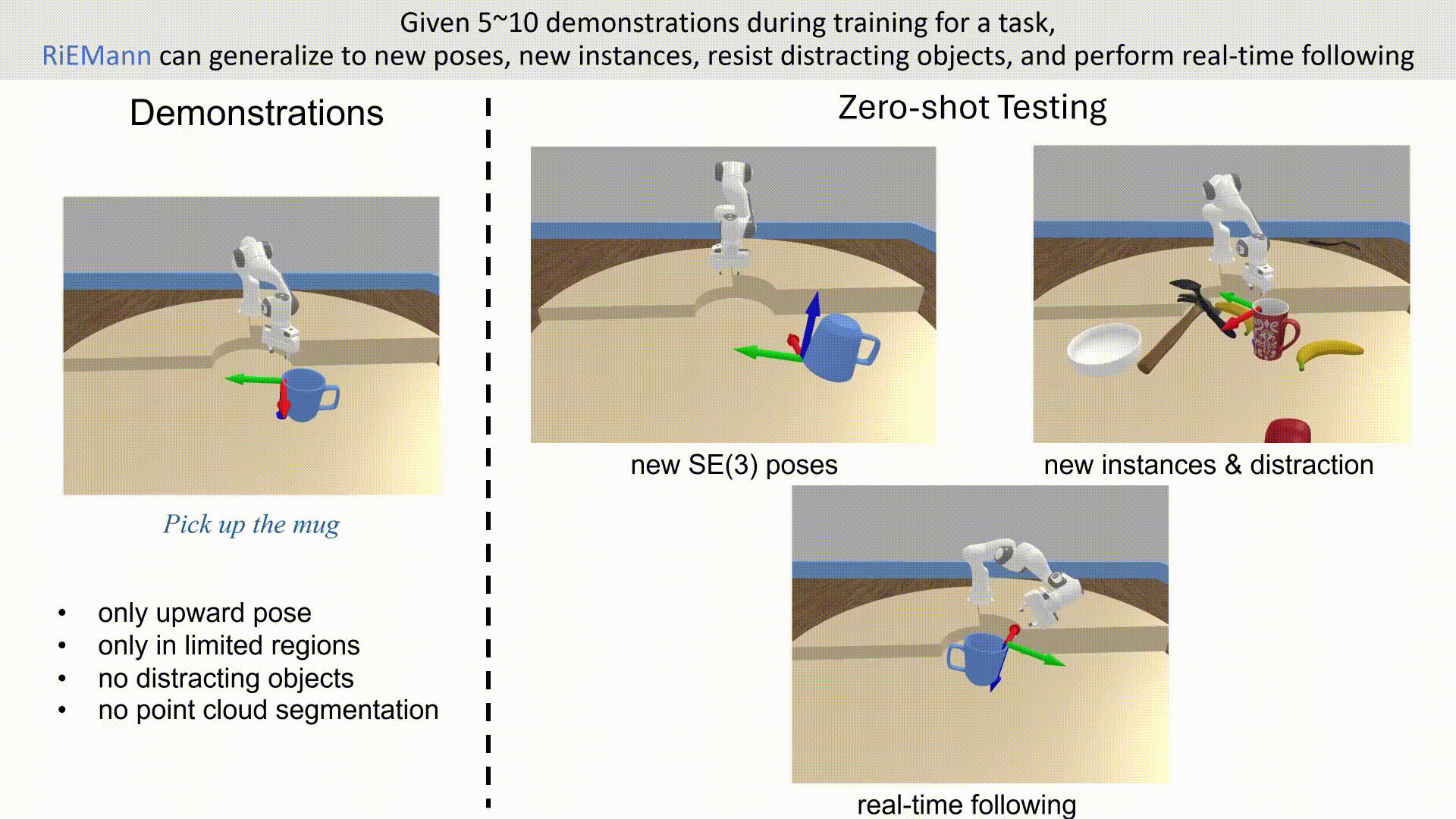This is the official code repository of RiEMann: Near Real-Time SE(3)-Equivariant Robot Manipulation without Point Cloud Segmentation.
RiEMann is an SE(3)-equivariant robot manipulation algorithm that can generalize to novel SE(3) object poses with only 5 to 10 demonstrations.
-[ ] Add pretrained models
-[ ] Add hyperparameter tuning guidance
-[ ] Upload more data
conda create -n equi python==3.8
conda activate equiNot sure if other python versions are OK.
-
Install PyTorch. RiEMann is tested on CUDA version 11.7 and PyTorch version 2.0.1. Not sure if other versions are OK.
-
Install torch-sparse, torch-scatter, torch-cluster, and dgl according to their official installation guidance. We recommend to use the following commands to install:
pip install torch-scatter torch-sparse -f https://data.pyg.org/whl/torch-2.0.1+${CUDA}.html
pip install torch-cluster -f https://data.pyg.org/whl/torch-2.0.1+${CUDA}.html
pip install dgl -f https://data.dgl.ai/wheels/cu117/repo.html
pip install dglgo -f https://data.dgl.ai/wheels-test/repo.html
pip install -r requirements.txt
Please put your data in the data/{your_exp_name}. We provide the demonstrations for the mug-pick experiment at data/mug/pick, both for training and testing.
The demonstration file is a .npz file and is in the following data structure:
{
"xyz": np.array([traj_num, video_len, point_num, 3]),
"rgb": np.array([traj_num, video_len, point_num, 3]),
"seg_center": np.array([traj_num, video_len, 3]),
"axes": np.array([traj_num, video_len, 9])
}
where the seg_center is the target position, and axes the target rotation, representated in the unit orthonormal basis of 3 axes v1, v2, v3 of the rotation matrix: [v1x, v1y, v1z, v2x, v2y, v2z, v3x, v3y, v3z].
As stated in our paper, there is an SE(3)-invariant network
-
python scripts/training/train_seg.py -
python scripts/training/train_mani.py
After these training, you will get a seg_net.pth and a mani_net.pth under experiments/{your_exp_name}.
Different hyperparameters in the config file leads to different performance, training speed, and memory cost. Have a try!
Run python scripts/testing/infer.py. You can select the testing demonstrations in the input arguments. After this you will get a pred_pose.npz that records the predicted target pose.
We provide different scripts for result and feature visualization in scripts/testing.
@inproceedings{gao2024riemann,
title={RiEMann: Near Real-Time SE(3)-Equivariant Robot Manipulation without Point Cloud Segmentation},
author={Gao, Chongkai and Xue, Zhengrong and Deng, Shuying and Liang, Tianhai and Yang, Siqi and Zhu, Yuke},
booktitle={arXiv preprint arXiv:2403.19460},
year={2024}
}


